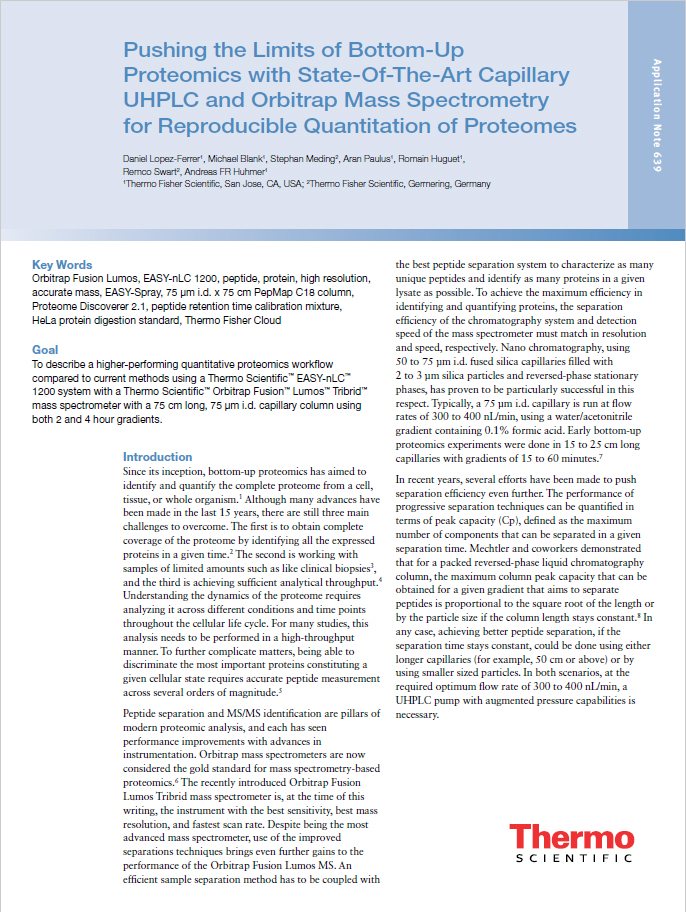January 1, 1970 (Vol. , No. )
Daniel Lopez-Ferrer Ph.D. Thermo Fisher
Michael Blank Ph.D. Product Marketing Manager Thermo Fisher Scientific
Stephan Meding Ph.D. Thermo Fisher
Aran Paulus Ph.D. Thermo Fisher
Romain Huguet Ph.D. Thermo Fisher
Remco Swart Ph.D. Director Product Manager Thermo Fisher Scientific
Andreas FR Huhmer Ph.D. Thermo Fisher
Using State-Of-The-Art Capillary UHPLC and Orbitrap Mass Spectrometry for Reproducible Quantitation of Proteomes
<Sponsored Content>
Since its inception, bottom-up proteomics has aimed to identify and quantify the complete proteome from a cell, tissue, or whole organism. Although many advances have been made in the last 15 years, there are still three main challenges to overcome. The first is to obtain complete coverage of the proteome by identifying all the expressed proteins in a given time. The second is working with samples of limited amounts such as like clinical biopsies, and the third is achieving sufficient analytical throughput. Understanding the dynamics of the proteome requires analyzing it across different conditions and time points throughout the cellular life cycle. For many studies, this analysis needs to be performed in a high-throughput manner. To further complicate matters, being able to discriminate the most important proteins constituting a given cellular state requires accurate peptide measurement across several orders of magnitude.
To read the remainder of this article, click here and download the PDF.

Thermo Fisher app note. Use link to the left to download this PDF.







